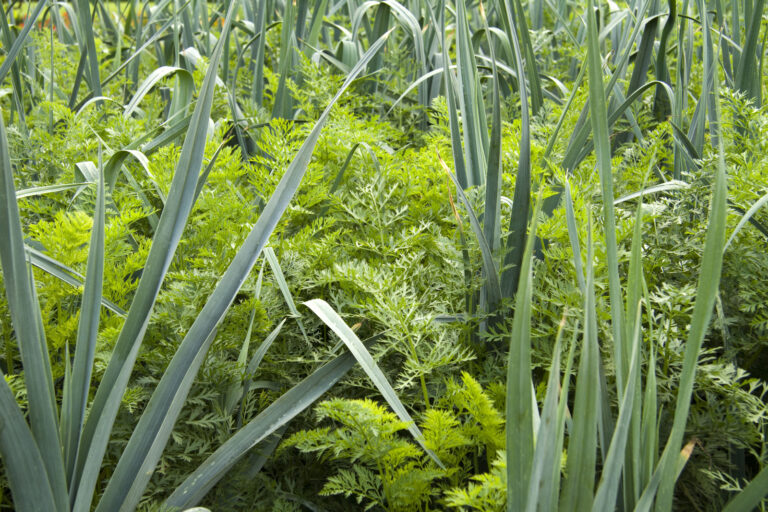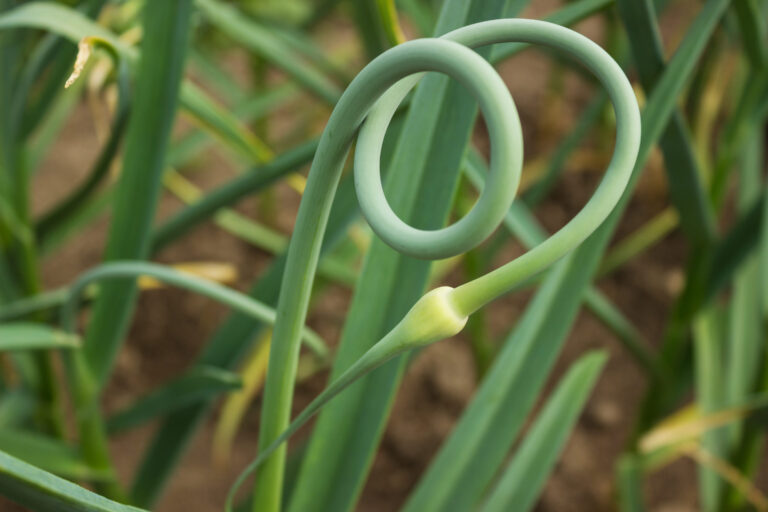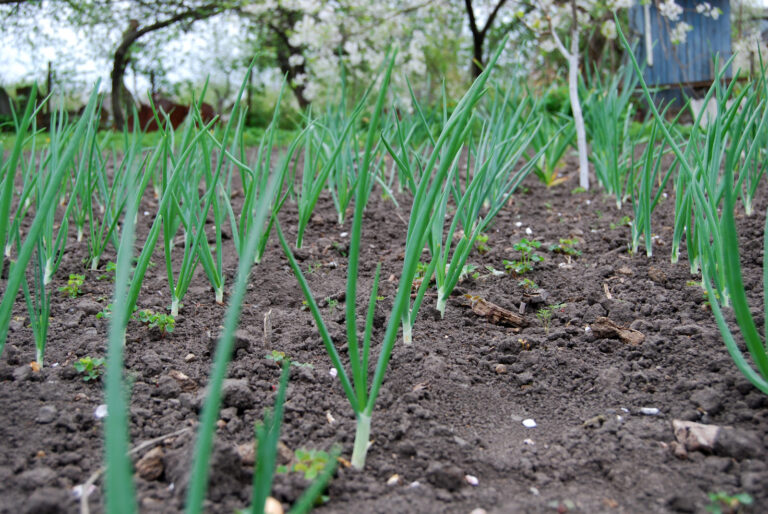Climate Guide: Growing Garlic in Warm vs. Cold Regions
Garlic (Allium sativum) grows on nearly every continent, but your climate—whether warm or cold—shapes how you should plant, grow, and harvest it. After growing garlic in both California’s hot Central Valley and cooler Sonoma Valley, I’ve learned firsthand that garlic is adaptable if you match your practices to your climate.
Garlic Planting Quick Chart by USDA Zone
| USDA Zone | Best Planting Time | Recommended Varieties | Notes & Tips |
|---|---|---|---|
| 3–4 | Mid Sept – Early Oct | Hardneck (Rocambole, Purple Stripe) | Mulch heavily; long cold spells ideal for hardnecks. |
| 5–6 | Oct – Early Nov | Hardneck & some Softneck | Reliable chill; mulch to prevent heaving. |
| 7 | Late Oct – Early Dec | Hardneck (Porcelain), Softneck (Artichoke) | Fall planting works; mulch helps with fluctuating temps. |
| 8 | Nov – Dec | Softneck (Artichoke, Silverskin) | Chill cloves 6 weeks for best results. |
| 9 | Late Nov – Jan | Softneck (Inchelium Red, California Early) | Refrigerate cloves; plant after soil cools below 60°F. |
| 10 | Dec – Jan | Softneck (Silverskin) | Essential to pre-chill cloves; plant in coolest months. |
| 11 | Not recommended | — | Too hot; try containers with pre-chilled cloves. |
Garlic in Cold Regions
Cold winters are actually an advantage for garlic—especially hardneck varieties. They need winter’s chill to trigger bulb formation.
Best Practices for Cold Climates
- Planting time: Fall, 4–6 weeks before the ground freezes.
- Mulch heavily: A thick layer of straw or leaves protects cloves from freeze-thaw cycles.
- Choose varieties wisely: Hardneck garlic (like Rocambole or Purple Stripe) thrives in cold climates.
- Spring growth: Expect strong green shoots as soon as the soil warms in spring.
My Cold-Climate Experience
When I gardened in the Sierra foothills, I always mulched heavily to protect bulbs from heaving. That simple step meant a reliable harvest every summer.
Garlic in Warm Regions
In warm and mild-winter climates, garlic requires extra attention. Without sufficient cold exposure, bulbs may stay small or fail to divide.
Best Practices for Warm Climates
- Chill before planting: Refrigerate cloves for 6–8 weeks to mimic winter (known as “vernalization”).
- Planting time: Late fall to early winter, once soil cools below 60°F (15°C).
- Choose varieties wisely: Softneck garlic performs best, especially artichoke types like ‘California Early’ or ‘Inchelium Red.’
- Mulch for soil stability: Helps moderate warm daytime temperatures and keep roots cool.
My Warm-Climate Experience
In Sonoma Valley, I refrigerate cloves before planting to ensure strong bulb development. Without chilling, the bulbs stay small and underwhelming.
Climate Takeaways
| Climate Type | Best Varieties | Planting Time | Special Considerations |
|---|---|---|---|
| Cold | Hardneck | Fall | Heavy mulch for freeze protection |
| Warm | Softneck | Late fall | Chill cloves before planting |
🌱 Bottom line: Whether you garden in frosty winters or mild, warm regions, garlic will reward you if you adapt your planting strategy to your climate.
Garlic Planting Quick Chart by USDA Zone
| USDA Zone | Best Planting Time | Recommended Varieties | Notes & Tips |
|---|---|---|---|
| 3–4 | Mid Sept – Early Oct | Hardneck (Rocambole, Purple Stripe) | Mulch heavily; long cold spells ideal for hardnecks. |
| 5–6 | Oct – Early Nov | Hardneck & some Softneck | Reliable chill; mulch to prevent heaving. |
| 7 | Late Oct – Early Dec | Hardneck (Porcelain), Softneck (Artichoke) | Fall planting works; mulch helps with fluctuating temps. |
| 8 | Nov – Dec | Softneck (Artichoke, Silverskin) | Chill cloves 6 weeks for best results. |
| 9 | Late Nov – Jan | Softneck (Inchelium Red, California Early) | Refrigerate cloves; plant after soil cools below 60°F. |
| 10 | Dec – Jan | Softneck (Silverskin) | Essential to pre-chill cloves; plant in coolest months. |
| 11 | Not recommended | — | Too hot; try containers with pre-chilled cloves. |
🌱 Quick gardener’s note:
In my Sonoma Valley Zone 9b garden, I plant in late November after refrigerating cloves for 6–8 weeks. This ensures strong root growth despite mild winters.
Garlic Growing Hub
Start here: The Ultimate Garlic Growing Guide: From Seed to Harvest
🌱 Garlic Planting & Timing Clusters
- Garlic Plant Starting Tips: How to Get Going
- When to Plant Garlic: Fall vs. Spring Compared
- Garlic Planting Calendar by Zone (Month-by-Month Guide)
- Ideal Soil Temperature for Planting Garlic and Why It Matters
- Climate Guide: Growing Garlic in Warm vs. Cold Regions
🧄 Garlic Types & Varieties Clusters
- Softneck vs. Hardneck Garlic: Key Differences for Gardeners
- Best Softneck Garlic Varieties for Home Gardens
- Best Hardneck Garlic Varieties for Flavor and Storage
- Rocambole Garlic: What It Is and How to Grow It
- Elephant Garlic: Tips for Planting and Harvesting Giant Bulbs
🌿 Growing & Care Clusters
- Proper Garlic Spacing for Bigger Bulbs
- How to Water Garlic the Right Way
- Fertilizing Garlic: Feeding Tips Bigger, Healthier Bulbs
- Essential Garlic Care: From Planting to Harvest
- Best Companion Plants for Garlic (And What to Avoid)
- How to Grow Garlic in Containers: Step-by-Step Guide
🐛 Pests & Disease Clusters
🌾 Harvest & Storage Clusters
- How to Tell When Garlic Is Ready to Harvest
- How to Harvest and Store Garlic
- How to Cure Garlic for Long-Term Storage
- Best Ways to Store and Preserve Garlic at Home
🍳 Kitchen & Use Clusters
- Garlic Cooking and Severing Ideas for Your Harvest Table
- Fresh Garlic vs. Stored Garlic: Flavor and Cooking Differences
- Garlic Scapes: What They Are and How to Use Them
- Leeks vs. Green Onions vs. Garlic: What’s the Difference







